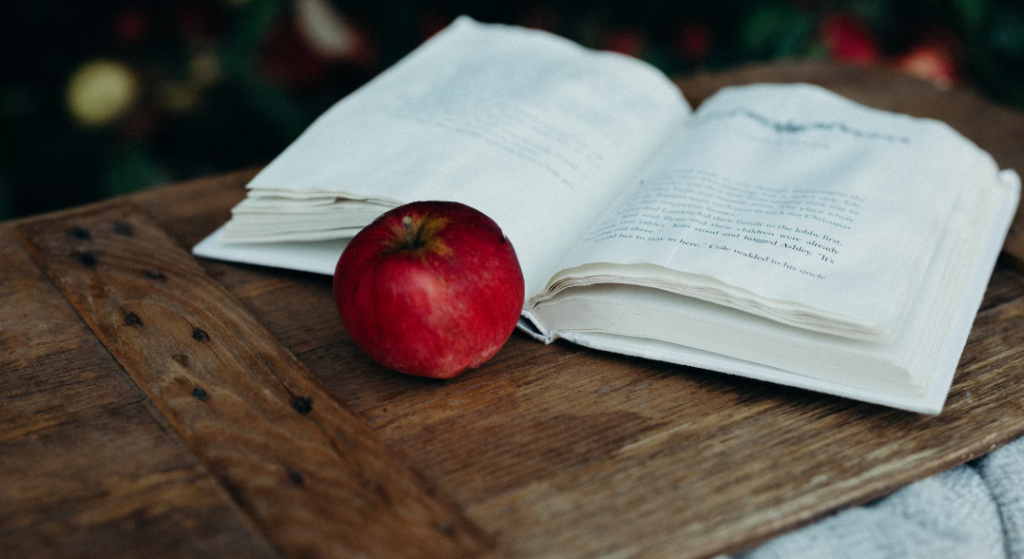We used our ‘wicked’ sense of humour to reinvent the world’s favourite fairy tales using AI. *Hint* – the results are brilliantly bonkers!

Fairy tales are loved by children all around the world, not least because they can be enchanting and scary at the same time. After all, there’s nothing like the risk of death or dismemberment to really make bedtime fun! Fairy tales also have the power to spark the imagination, encourage creative thinking and even teach us a lesson or two in morality along the way. Why? Because parents need some way or other to stop the kids misbehaving! We have, of course, all heard of the classics such as Cinderella, but there’s a whole library of less well known – but by no means less magical, engaging and gruesome – fairy tales originating from countries across the globe.
So once upon a time at Wicked Uncle, we decided that we were all about the fun. And we thought what could be more fun than combining traditional fairy tales with modern AI images to create some eye-catching takes on these popular stories.
To do this, we used AI image generation tool Midjourney to produce visual representations of the world’s most popular fairy tales, based on just the plot of the story. The resulting reinterpretations are enlightening and, at times, somewhat unsettling!
European fairy tales re-imagined with AI
We began our journey in Europe, asking AI to reinterpret the most popular fairy tales from across a continent that’s known for its gothic castles, right royal families and (sometimes) horrible histories. For the most part, the images generated felt like they could be featured in a children’s story book. At times though, we have to admit that they seem slightly ominous for a children’s classic!
- Cinderella – United Kingdom, France, Italy (and the United States)
- Hansel and Gretel – Germany and Luxembourg
- Little Red Riding Hood – Spain
- The Little Mermaid – Denmark
- The Boy Who Wanted More Cheese – The Netherlands
- The Goat and Her Three Kids – Moldova
- The Twin Hunchbacks – Hungary
Cinderella – United Kingdom, France, Italy (and the United States)
The prompt we gave was: “An abusive stepmother and two stepdaughters are invited to a royal ball, leaving behind their daughter and sister whom they call Cinderella.“
In some images, Cinderella is portrayed as a young woman, while others depict her as a child. Interestingly, the older woman in the images looks more like the benevolent Fairy Godmother than the more nasty family members mentioned in the prompt. This makes us wonder whether AI has a more rounded understanding of this story than we might have first expected! But then again, there is no pumpkin carriage, nor fairytale Prince Charming ending in sight for our heroine for now…
Hansel and Gretel – Germany and Luxembourg
We asked the AI to generate an image representing this story based on a prompt consisting of the main plot: “Hansel and Gretel, who are abandoned in a forest, fall into the hands of a witch who lives in a gingerbread, cake and candy house.”
We think the idea of a witch fattening up children with the goal of eating them is pretty dark, unless you’re not opposed to a spot of cannibalism!
The images generated are depictions of the two children and their utter delight at seeing the gingerbread house, unaware of the dangers that lie in store. It seems however that they might be spared from their sticky end on this occasion as there is no witch in sight and we all know she’s a crucial cog in the wheel of this cautionary tale.
Little Red Riding Hood – Spain
We asked the AI to generate an image based on the following prompt: “On the way to visit her sick grandmother, whose frailty and illness prevents her from even getting up to open the door, a girl with a red hood is led astray by a wolf.”
Interestingly, Spain’s most popular fairy tale is Little Red Riding Hood, which fails to serve up a happy ending after the wolf gobbles up both the protagonist and her bedridden grandmother!
The images are rather sinister, showing our heroine dressed in her iconic red cloak, standing in a doorway. Looming at exceedingly close quarters behind her is a realistic looking wolf looking suitably threatening – we wouldn’t want to stick about for long! However, where is Red Riding Hood’s grandmother? Has she already been snaffled up by the wolf?!
The Little Mermaid – Denmark
Denmark’s most popular fairy tale was, of course, The Little Mermaid, a perennial favourite courtesy of Hans Christian Andersen and, of course, Disney.
We asked Midjourney to generate images based on: “A mermaid princess swims to the surface of the sea, sees a human prince, and falls in love with him. She saves his life and wishes to meet the prince again. She looks for a way to win the prince’s love, so she goes to the sea witch.”
The images generated are certainly evocative of The Little Mermaid, with some featuring the flowing red hair that’s synonymous with the titular character. Interestingly, most of the images feature a human woman underwater, rather than in her mermaid form and – yet again – there is no witch in sight with which to strike a magic deal. However, Ariel desires nothing more than to become a human and fall madly in love with a prince, so maybe AI was onto something here after all!
The Boy Who Wanted More Cheese – The Netherlands
Next, we have the most popular fairytale in The Netherlands, The Boy Who Wanted More Cheese, which we have to admit was a new one for us, although the bizarre premise does appeal to our mischievous nature!
The prompt was: “A young boy is never satisfied with the amount of cheese he receives. He makes wishes to a magical bird for more cheese, but each time he gets his wish, the cheese multiplies uncontrollably, leading to chaos in the village until he learns the value of moderation.”
The most popular fairytale in The Netherlands is The Boy Who Wanted More Cheese which we have to admit was a new one for us! The bizarre premise does appeal to our mischievous nature as who wouldn’t want even more of their favourite food?
If you think that this tale’s connotations sound vaguely familiar, you’d be correct. The Magic Porridge Pot is a tale by Brothers Grimm, in which a pot of oats won’t stop overflowing, with disastrous results for the heroine and her surrounding village. For our dairy-based story, the images capture its ethos well and make us want to devour a cheese board right away.
The Goat and Her Three Kids – Moldova
Moldova’s favourite fairytale was The Goat and Her Three Kids and if you think this tale is reminiscent of The Three Little Pigs, you wouldn’t be far wrong.
We used this prompt: “A mother goat leaves her three kids at home while she goes out. A cunning wolf tries to deceive the kids by impersonating their mother, but the kids outsmart him, and he ultimately meets a sticky end.”
Unfortunately, AI appears to have had a brain melt and miscounted the baby goats in the majority of images, including either too many or too few. There is also no sign of the wolf that plays such a big part in the story, making it difficult to tell which fairy tale these images are supposed to represent. In fact, it wouldn’t be too much of a stretch to assume the story might also be Three Billy Goats Gruff?! Maybe we got two for the price of one here.
The Twin Hunchbacks – Hungary
We gave Midjourney the following prompt: “Two hunchbacked brothers live in a village. When they come across a magical tree and a talking fish, their compassion and willingness to help others lead to unexpected rewards and a happy ending.”
Hungary’s favourite fairy tale, called The Twin Hunchbacks, a folkloric story that touches on disability and overcoming adversity which really touched our hearts.
Overall, the images represent the story well, as they clearly show both the enchanted tree and the talking fish, which you definitely wouldn’t come across anywhere else. However, one vital aspect of the story is absent in each of the images, with the brothers both missing their described disability. Looks like Midjourney doesn’t really understand everything!
Favourite fairy tales of The Americas with an AI spin
We looked at some of the most popular fairy tales spanning across The Americas. This included North America, which is renowned for its sweeping national parks, vibrant cities, vast lakes and beautiful beaches.
Then there is Central America, a region known for its tropical climate, volcanic ruins, Mayan ruins and rich culture.
And who could forget South America, which is regarded for its colourful cultural traditions, natural beauty, historic landmarks and stunning waterfalls.
- How Glooskap Made the Birds – Canada
- The Golden Voice of Poas – Costa Rica
- Martina the Cockroach – Cuba
- The Poor Old Lady – Colombia
- The Girl and the Puma – Argentina
- The Frog and the Condor – Peru
How Glooskap Made the Birds – Canada
The most popular fairy tale in Canada is How Glooskap Made the Birds, which we have to admit we didn’t know, and nor did the Canadian working with us! So we knew we needed to see how AI interpreted this enigmatic tale.
We asked AI to create images that represent: “A benevolent and powerful figure, forms birds from stones, each with unique characteristics and abilities. Through this act of creation, the world gains the beauty and diversity of birds, representing the harmony and balance in nature.”
This is a beautiful folkloric tale that talks about the beauty of nature – always a topical subject – and specifically how diverse these creatures are in their appearance and birdsong. The images generated don’t show any sign of Glooskap, the mysterious figure that creates the birds. The images certainly capture the idea of the birds being made from stones but are more literal than creative…
The Golden Voice of Poas – Costa Rica
The images created for the most popular fairytale in Costa Rica, The Golden Voice of Poas, instantly make us want to know more about this singing talent and whether she’s bound for pop stardom!
We gave the following prompt: “A girl saves a wounded bird, and in return, the bird grants her a golden voice that enchants everyone who hears it. However, the newfound gift brings both admiration and jealousy.”
There’s no denying it, these enchanting images look as though they have been pulled straight from a children’s book and each one clearly depicts a young girl cradling a bird. But there’s no sign of her singing in any of the images, nor people reacting to her new found voice. What we do love about these images is how well they depict the touching emotional connection between girl and bird. We’re not crying, you’re crying…
Martina the Cockroach – Cuba
Our prompt was: “A clever and resourceful cockroach named Martina. Despite her small size, Martina uses her intelligence to outsmart various predators and eventually becomes a respected member of the animal community. She even finds love and marries the mouse.”
Cuba’s favourite fairytale is certainly something a lot of kids could relate to and teaches them about overcoming obstacles. Martina the Cockroach – also known as Martina the Beautiful Cockroach, is certainly not who we want to find around our homes!
As you can see, the images are very cockroach-centric, which is seriously making our skin crawl! Some of them are cartoonish while others are downright sinister and there’s no sign of our cute little mouse friend, which would have been welcome at this point.
The Poor Old Lady – Colombia
Next is Colombia’s most popular fairytale, The Poor Old Lady, which teaches children that material possessions aren’t everything in life – a very good lesson indeed!
To generate these images we said: “A kind-hearted old woman who lives alone in a small cottage. Despite her poverty, she always helps others in need. One day, she receives a magical gift from a fairy for her generosity, which brings her good fortune and happiness.”
In our opinion, these images have exquisite attention to detail. Not only are they visually appealing, but they also clearly show the old woman gratefully receiving an enchanted gift. One of the images even includes a fairy approaching the woman as she lovingly tends to a bird. Truly magical *sighs*.
The Girl and the Puma – Argentina
Next up is Argentina’s favourite fairy tale; The Girl and the Puma, which is giving us sassy ‘us against the world’ vibes.
We used the following prompt for our images: “A young girl who saves a puma cub from a hunter’s trap and raises it as her own. As the puma grows, it becomes fiercely protective of the girl, and their bond deepens. When the girl is eventually forced to leave her home, the puma helps her in her journey and ensures her safety. “
The images show both the young girl and the puma together and demonstrate the close bond they clearly have with one another. However, one of the images begins to blend the girl and the puma, giving the former cat-like eyes and ears, a paw instead of a hand and a snub nose which just seems off kilter to us. We’re left wondering if it is the girl and the puma or the girl as a puma? AI can go hilariously wrong at times!
The Frog and the Condor – Peru
The AI image generator was given the following prompt: “A frog asks for the condor’s help to cross a river. The condor agrees but betrays the frog, causing it to fall into the water. The frog survives and seeks revenge by tricking the condor into a dangerous flight.”
Peru’s most popular fairy tale, The Frog and the Condor, is a rather rousing tale that has hints of daredevil, not to mention naughty double crossing behaviour.
The images correctly highlight the frog’s mission to cross over a river, but we cannot ignore an element of confusion around the story’s characters. In the majority of the images, the AI has combined both the frog and the condor to create a rather strange hybrid creature that looks similar to a frog with bird-like wings. There is no sign of the condor actually helping the frog to cross, nor the latter making its splashy entrance into the river. Maybe this is the frog’s dream after all!
Portraying Asian fairy tales
For the next set of fairy tales, we’re off to Asia. The images created for this continent’s stories vary vastly from country to country, given its rich cultural tapestry, ancient civilisations and breathtaking religious temples.
Tale of the White Snake – China
We used this prompt: “A white snake spirit takes on human form and falls in love with a human man named Xu Xian. They get married and open a medicine shop together, but their happiness is threatened by a Buddhist monk named Fahai, who believes the white snake spirit is evil.”
China’s most popular fairytale is Tale of the White Snake, a fast-paced tale about a snake spirit who falls in love with a human, complete with the chaos that follows.
We think the images represent the story well, symbolising that the white snake spirit has taken on a human form in a bid to fall in love – much like the mermaid in Denmark that also had to take on human form – and get married. But we noted there’s no sign of the medicine shop or the obstacles posed by the headstrong monk in any of the images. Maybe even an AI dreams of a perfect life with a totally easy and beautiful ending.
The Lion and the Crane – India
Next up is India’s favourite fairytale, The Lion and the Crane, which is reminiscent of tried and tested Aesop’s Fable The Lion and the Mouse.
To generate these images, we used the following prompt: “A lion and a crane become friends. The lion saves the crane’s life, but the crane’s friendship is tested when the lion falls ill and asks for help. The crane uses its beak to remove a bone from the lion’s throat, saving its life, and the two friends are united once again.”
In this instance, AI did include a lion and a bird in each image, and they all vary in style, which adds a creative element. Keen eyes among you might notice though that none of the birds depicted are actually cranes! Similarly, one of the images introduces a surprising new creature – potentially a lion cub we think – which wasn’t featured in the original fairytale, nor our prompt. The rumour of the internet being run by cats ma be true for AI as we see a distinctively cat-like bird alongside the extra cub!
AI interprets African tales
In our final section, we explored how successfully AI was able to represent fairy tales from Africa, which is famous for its jaw dropping safari wildlife, vast desert expanses and magnificent ancient history. The fairytales included in this section are once again drastically different from each other from a style perspective, but how well do they depict their originating story?
The Doomed Prince – Egypt
Next is Egyptian favourite fairy tale, The Doomed Prince, all about an adventurous young royal with a long road to freedom. It’s an age-old tale that sounds like it could also take place in the modern age if our own royal family is anything to go by!
We gave the AI the following prompt: “A king and queen desperately want a child. They receive a prophecy that their son will die from a snakebite, so they take extreme measures to protect him. However, fate takes a surprising twist, leading to an unexpected resolution.”
The images depict the threat posed by the snake, which as it looms large, we think is truly terrifying! One also shows the young prince wearing a snakeskin hat, while the other the king and queen together and clearly in love with one another. For those already familiar with the original story, we think these images – while not entirely conveying the entire story plot – make for a decent representation of this famous story.
The Monkey, the Shark, and the Washerman’s Donkey – Tanzania
We asked Midjourney to create images with: “A monkey convinces the shark to venture onto dry land in search of food, where it becomes stranded and ultimately dies. The story illustrates the value of wit and intelligence in overcoming even the most formidable adversaries.”
The Monkey, the Shark, and the Washerman’s Donkey is the most popular fairytale in Tanzania and teaches an important lesson about using your common sense, which even at the best of times, can at times be a tricky thing to do!
These images have us coming over all uneasy, with the monkey looking extremely menacing as it emerges from the sea and appears to dwarf the washerman, very King Kong-esque. We got the sense from the prompt that the money is clever, rather than the scary apparition which we see here! There is no sign of the shark making its way on to dry land which, again, is a crucial part of the story.
Our fairytale findings
We loved selecting our fairy tales from across the world and seeing them come to life in a whole mix of fun and frivolous right though to frankly fearsome and ferocious ways! Some of the AI images were super creative and really did capture the magic of the stories via the prompts, while others were simply lost in translation – but still rather fantastical! What was interesting to see is how some of them missed vital plot details that were clearly included in the prompt or created images that changed the story entirely without any warning. Midjourney is mischievous with a creative twist!
However outlandish some of the stories are, there’s no denying that they can help youngsters develop their personalities and learn the difference between right and wrong – even if the ultimate message is often somewhat toe curling! It’s going to be interesting to observe how, in future years, the visuals created for children’s books might evolve to help children learn in ever more bold and impactful ways, meaning of course that they all live happily ever after…
Methodology
We analysed the most popular fairy tales from 62 countries across the globe because there’s nothing like a good story to scare and delight the senses in equal measures!
Next, for each country’s most popular fairy tale, we asked an AI image generator to create images that represented the plot of the story. We provided each story’s plot as a prompt and allowed the AI to generate images based on this alone.
We decided to take this approach because we enjoy inspiring an interest in advanced technology through fun, and we have a vast online selection of educational and STEM toys that help children to learn, grow and gain new skills. As AI continues to increase its influence over the coming years, we’re totally convinced that it will be a valuable tool for little learners to hone their logical reasoning and problem-solving abilities, all while building their own AI projects and becoming the next generation of innovators.
So, without further ado, we reveal our top story picks by continent, and you’ll be staggered by the sheer creativity of some of the more surreal plot lines, not to mention the resulting reimagined images!
Disclaimer:
All of the images within this research were generated using the AI image generator, Midjourney – with the prompts that have been included for each story. None of these images were created by anyone at Wicked Uncle. As such, any resemblance to real people is purely coincidental as a result of AI-training algorithms.



